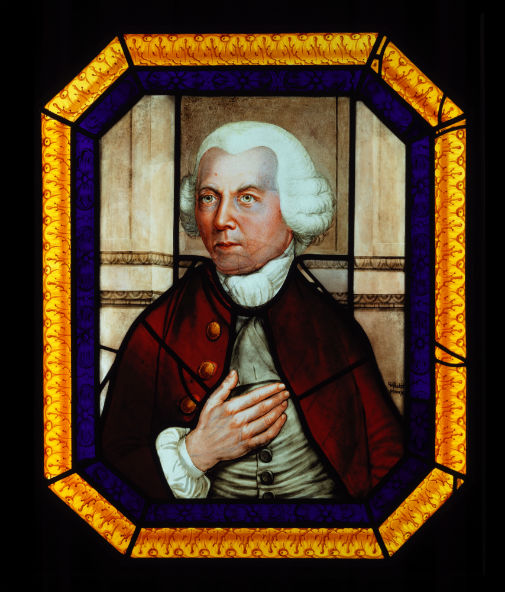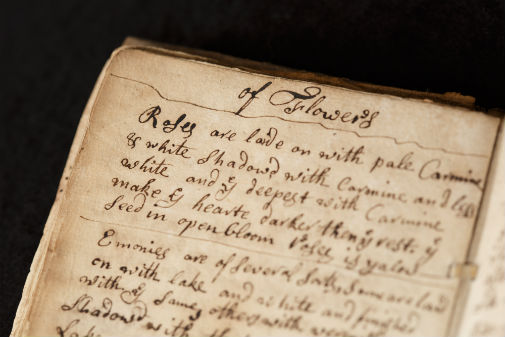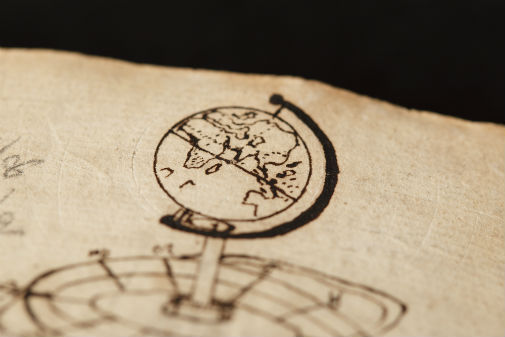His colourful materials: University acquires 18th-Century stained glass painter’s notebook
Posted on 13 December 2019
 Peckitt's self portrait in glass. Credit: York Glaziers Trust
Peckitt's self portrait in glass. Credit: York Glaziers Trust
The book appears to chronicle a teenage William Peckitt using a combination of study and experiment to learn his craft. It is the earliest surviving work in his hand.
Peckitt, who was from York, went on to paint windows of multi-coloured light across the country and counted George III among his patrons. The vivid colours of his work can been seen on either side of the south transept in York Minster.
Rare opportunity
The University, supported by the Terry Trust, the York Glaziers’ Trust and Friends of the Library and Archive, seized the rare opportunity to save the book for the City following a sale at auction over the summer.

Conservation experts at the University’s Borthwick Institute for Archives will restore the 90 page, hand-stitched vellum notebook before digitising its contents and making them freely available to the public.
The information on historical glass painting materials and techniques contained within Peckitt’s penmanship will be of vital importance to an understanding of his approach to his craft, and for modern-day glass restoration work.
Self-taught
Sarah Brown from the Department of History of Art at the University of York, said: “This extraordinary book contains Peckitt’s notes on what he was learning as a young artist. He writes about how to paint details including faces, animals, fruits, flowers and the folds of drapery. He considers thicknesses and textures, shading and light - what colours should be used and how paints should be mixed.
“Peckitt was the third son of a glove maker and how he trained as a glass artist has always been a mystery. His claim to be self-taught, stoutly defended after his death by his daughter, has been met with scepticism, but, while more research is needed, the notebook seems at first glance to bear that claim out.”
Peckitt was born in Husthwaite near Easingwold and was baptised in York in 1731. He died on 14 October 1795 and is buried in the church of St Martin-cum-Gregory, York.
Keeping tradition alive
He penned the book in the mid-1740s before going on to become the most famous glass painter in the country.
Glass painting was not as popular during Peckitt’s lifetime as it had been in the medieval period or would become in Victorian times and the artist is credited with keeping the tradition alive during a period of cultural decline.

Sarah Brown added: “This book offers a first glimpse of Peckitt as a young person. Some of the notes are in Latin and French and discuss techniques he went on to become well- known for, such as miniature painting in stained glass. Peckitt also jotted down notes on the chemistry of glass as well details that point to his wider scientific interests, such as the diameter of the earth and the velocity of its spin.
“Peckitt’s mature work explored the potential of glass and colour to convey stories through a combination of the arts and sciences and Peckitt’s juvenile notebook reflects his early passion for all three.”
Explore more news
.jpg)
University of York awarded £1.1 million to lead the first stage of UK’s first comprehensive study on devolution and social security
Thursday 25 April 2024

More hybrid and nature-based solutions are urgently need to protect coastal communities from climate change
Wednesday 24 April 2024

New butterfly species created 200,000 years ago by two species interbreeding
Thursday 18 April 2024

Children in the North at greater risk of entering care
Wednesday 17 April 2024

Boreal forest and tundra regions worst hit over next 500 years of climate change, study shows
Monday 8 April 2024
